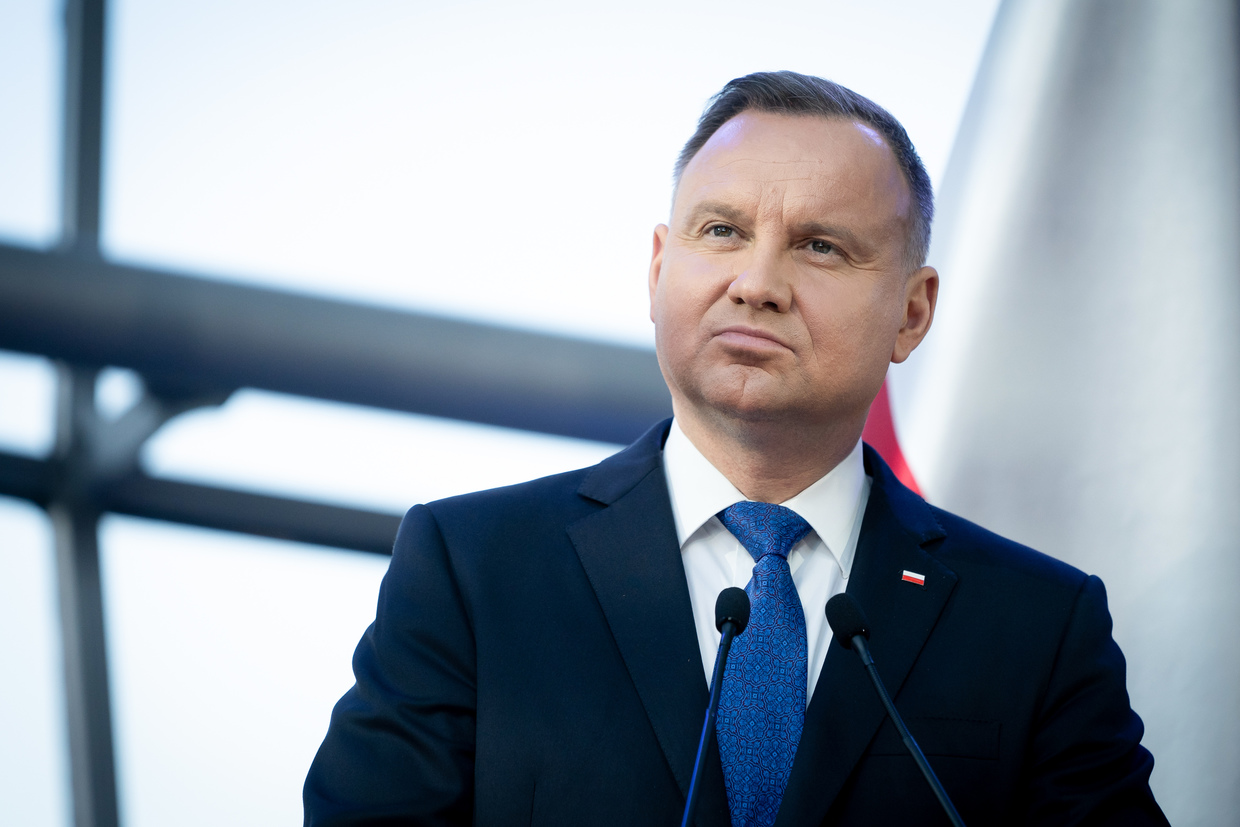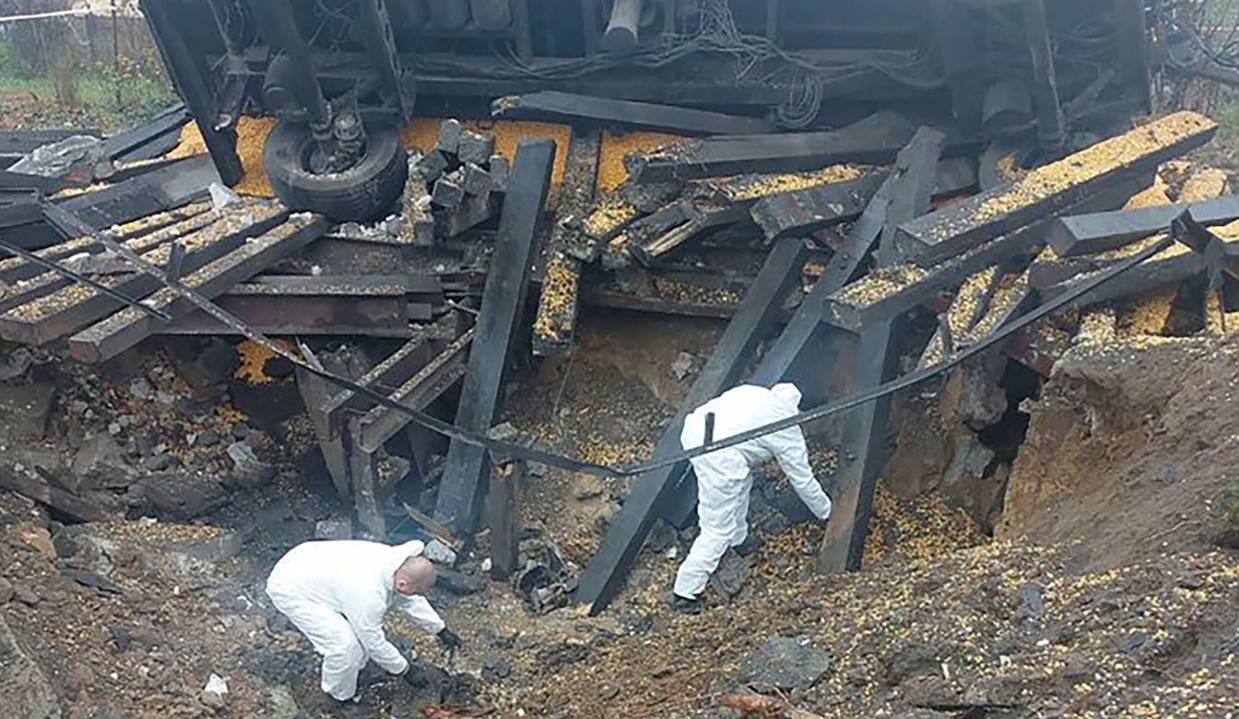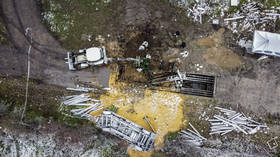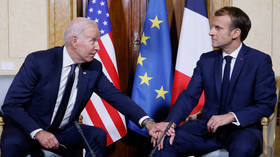‘The US won’t sacrifice Chicago for Warsaw’: Russian experts explain why NATO brushed the Poland missile incident under the carpet
 RT, November 18, 2022 — How the US-led reaction to a Ukrainian weapon hitting the bloc’s territory exposes the imbalance within its ranks.
RT, November 18, 2022 — How the US-led reaction to a Ukrainian weapon hitting the bloc’s territory exposes the imbalance within its ranks.The media erupted after a missile landed on Polish territory this week and took the lives of two civilians. Given the accusations leveled at Russia in the hours following the incident, the invocation of Article Five of the NATO Treaty governing collective security would not have come as a complete surprise.
Of course, this undoubtedly would have led to the beginning of World War III.
However, it turned out that the West was not looking for a direct armed conflict with Russia. Western European and American officials hurried to tone down their indignation and put a lid on the situation.
Who is at fault?
The incident in the Polish village of Przewodow, which borders Ukraine, once again raised questions about the efficiency of NATO’s mechanisms for joint defense. Within 24 hours of the strike, two facts had been established conclusively: What had been fired was an S-300 anti-aircraft guided missile and two people had been killed.
Soon after the incident, Poland’s Foreign Ministry rushed out with the conclusion that what landed in the village was a “Russian-made missile.” The S-300 was developed by the Soviet Union when both Moscow and Kiev were members. Russia did not exist as an independent state at the time.
Polish President Andrzej Duda was less categorical, saying that there was no verified information about the origin of the missile but that “most likely, it was a Russian-made rocket.”

The Polish Foreign Ministry summoned Russia’s ambassador in Warsaw, Sergey Andreyev. Meanwhile, Prime Minister Mateusz Morawiecki convened an emergency meeting of the National Security Bureau and members of the Committee for National Security and Defense. At the meeting, a decision was made to put some military bases in the country on heightened alert.
Russia’s Defense Ministry stated that the missile that landed in Poland had been launched from a Ukrainian S-300 system. The ministry added that Russia had not attacked any targets near the Ukrainian-Polish border and that precision strikes had been carried out only on the territory of Ukraine and not within 35km of the border with Poland. The Russian military provided assurances that all missiles that it had launched struck their targets precisely and that accusations of its rockets falling on Poland were an intentional provocation.
In a conversation with RT, military commentator and retired Colonel Mikhail Khodarenok noted that the most likely culprit in this incident is Ukraine’s 540th Anti-Aircraft Missile Regiment stationed in Lviv. The regiment has been receiving 5V55R guided missiles from a factory in Vishnevy near Kiev, which began producing them after Ukraine gained its independence.
“For the 540th Regiment the evening of November 15 probably played out the following way. The regiment was engaged in combat operation and was firing at aerial targets. It is entirely possible that one of the divisions (or both using concentrated fire) were carrying out launches at pursuit courses of an azimuth of 240-300 degrees (in a westward direction).”
“It is possible that one of the guidance channels experienced an error (this is by no means rare in a difficult and fast-paced air battle), and two 5V55R guided missiles ended up in Polish air space. Following the misfire, the missiles switched to self-destruction mode, via the command of the time mechanism (or by full power being switched off), the warheads exploded, and the debris fell to the ground,” according to the colonel’s account of what may have happened.
Kremlin spokesman Dmitry Peskov also noted that the incident in Poland could not be considered grounds for escalation. He labeled the statements of a number of Western politicians as “another example of hysterical Russophobia.”
Shortly thereafter, Warsaw itself acknowledged that it had likely falsely implicated Moscow. Duda himself said it was “highly likely” that the missile was from Ukraine’s air defenses.
Western leaders preferred to refrain from aiming aggressive accusations at Russia. The US Department of Defense stated that it did not possess evidence that could confirm reports of a Russian missile falling on Polish territory. President Joe Biden noted that preliminary information pointed to the missile having not originated in Russia. Furthermore, as Reuters later reported, he warned G7 leaders that what came down in Poland may have been a Ukrainian air defense missile.

Peskov characterized the American reaction as restrained and professional.
As Colonel Khodarenok said, “the White House’s equanimity is clearly based exclusively on irrefutable data from US intelligence.”
French President Emmanuel Macron also refrained from categorical assessments, stating that it was currently impossible to establish who is responsible for the missile incident in Poland.
NATO head Jens Stoltenberg explained why the missiles weren’t intercepted by air defense, saying that there had been no warning of an imminent attack and the incident didn’t have such characteristics.
Could NATO trigger Article Five?
Immediately following reports of the strike on Polish territory, the media began talking about Articles Four and Five of the NATO Treaty. Article Four is the second-to-last step in the US-led bloc’s system of reacting to threats faced by member nations. It calls for members to carry out consultations with each other if one of their number faces a threat to its territorial integrity, political independence, or security.
Article Five of the Washington Treaty entails an immediate collective military response by NATO, which must be given if any treaty signatory is subject to attack. This article has only ever been invoked one time: After the terrorist incidents of September 11, 2001, in the US after which an American-led coalition invaded Afghanistan.
It is noteworthy that one of the first to comment was Ukrainian President Vladimir Zelensky, who placed responsibility for the “missile strike” on Russia. He said it constituted an attack on collective security and a significant escalation, clearly suggesting that it amounted to an assault on a NATO member.
Alexey Danilov, the secretary of Ukraine’s National Security and Defense Council (NSDC), said that Kiev did not agree with the West’s conclusion that the missile was of Ukrainian origin and demanded that his country’s experts be granted access to the site. He said that Kiev wanted to hand over to its backers “evidence of the Russian trail” and was asking how they reached the conclusion that it had been a Ukrainian anti-air missile.


